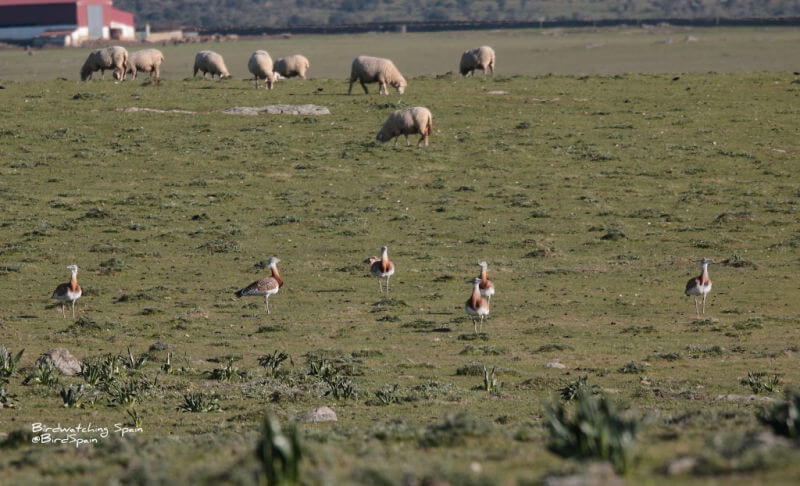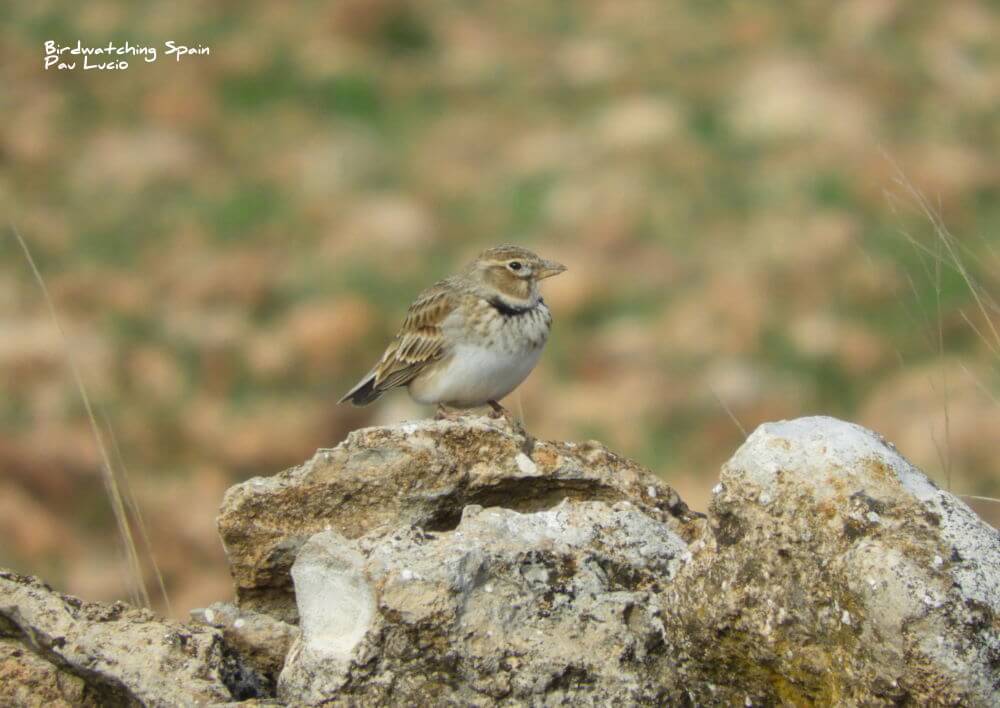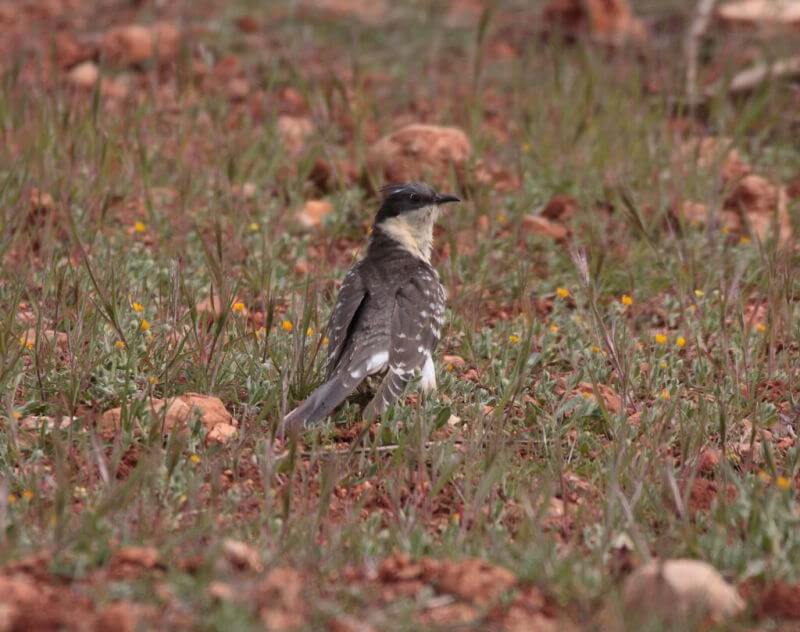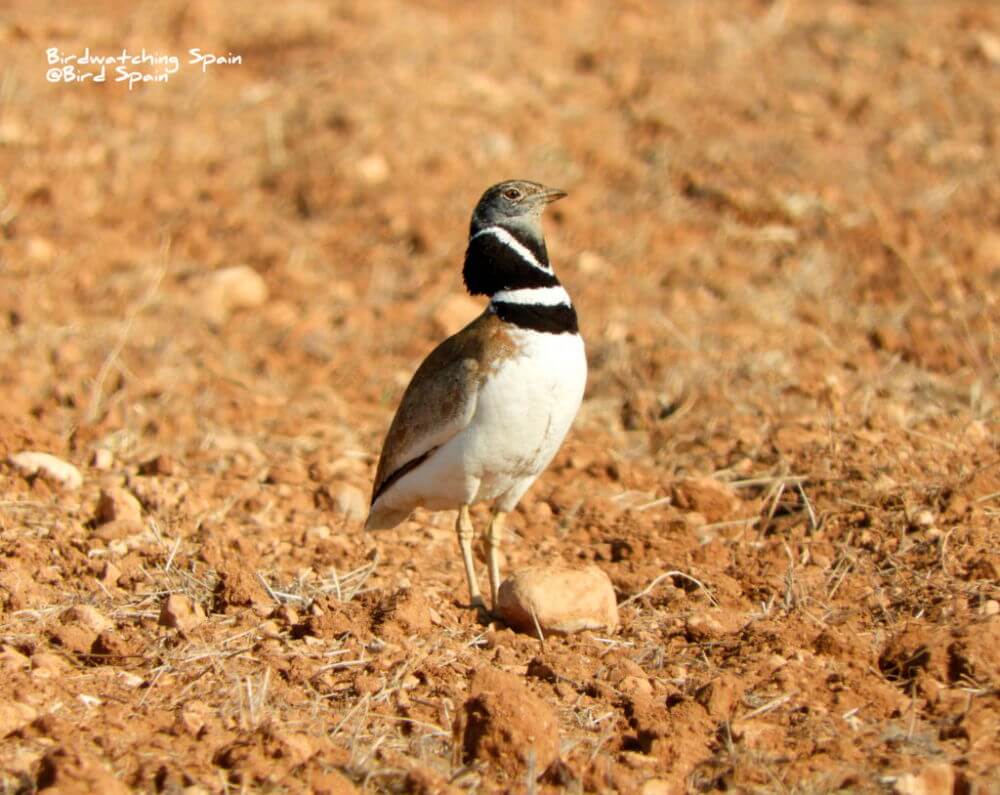Birdwatching and wildlife tours in Spain
Steppe birds in Valencia and Alicante
Valencia Region and particularly Valencia and Alicante provinces are excellent places to watch steppes birds. There are two main places, one is Pétrola and it is located in the borders between Valencia and Albacete. The second one, is in Villena, in the Alicante province.
Both places hold a good number of steppe birds: Little Bustard (sadly scarce and declining) and Great Bustard, Pint-tailed and Black-bellied Sandgrouse, Calandra, Thekla and Short-toed Lark, etc. Sadly, this group of birds are declining due to farming intensification.
Pétrola is probably a better place for Great Bustards, while Villena holds a higher density of both Sandgrouses as well as Lesser short-toed Lark. In addition, both areas offer good chances to see Spanish Imperial Eagle, although the sightings are mainly immature birds. Golden Eagle, Great spotted cuckoo, Spectacled Warbler and other wonderful birds can be seen along the year.
Both places can be visit during our 5-day bird watching tour.
Trip report to Pétrola and the steppes of Albacete. Steppe birds in Valencia
This trip report is about the guiding I did in Petrola on April 29th. It is 8:30 in the morning and I am meeting Peter and his wife in a petrol station near l’Alcudia. I suggested them to take this tour as this area looks superb at the moment! These well preserve steppes are among the best birding places in all East Spain.
Our first stop in a lagoon revealed Greater Flamingos, Avocets, Black-winged Stilts, Common Sandpiper, Gadwalls, Shelducks, Dunlins, Redshanks and Gull-billed Terns. It did not take long before I locate 4 Long-tailed Sandgrouses, Hoopoe and Calandra Larks in the nearby fields. Ten minutes later a group of Black-bellied Sandgrouse flew at some distance which made us very happy! Christine did very well finding our first Great Bustard, which was followed by two males and few more females. We have been just 40 minutes and we have seen all these amazing birds! Both Sandgrouses and Bustards usually occurs in the same area.
The temporary lagoons of Petrola: a wonderful spot packed with birds
Later, we stopped in a second lagoon finding Kentish and Ringed Plover, Lapwing, Greenshank, Black-tailed Godwits, Whiskered Terns and 2 Temminck’s Stints. So far so good! A solitary Stone Curlew flew above the lagoon. In front of us, there was a stone wall where I found Crested Larks, a Rock Sparrow and a flock of Spotless Starlings. We continue driving to the Petrola lagoon to find Ruff, Wood Sandpiper, Sanderlings, Little and Cattle Egrets, Marsh Harriers, Zitting Cisticolas, Bee-eaters, Black-necked Grebes, Common and Red-crested Pochards, Yellow Wagtails, Shovelers, 2 stunning males White-headed Ducks and Black Terns.
The island on the back of the lagoon, was very busy with large numbers of Greater Flamingos and Black-headed Gulls breeding. Peter spotted on the top of the reeds a Great Reed Warbler singing. Reed Warbler and Savi’s warblers were also singing from the reeds and a Cuckoo from the farmland close to the lagoon. Before we moved to the next place, we watched a Nightingale on an almond tree.
Finally, we move around the farmland to find Short-toed Larks, around 15 Great Bustards, Linnets, Corns Buntings and finches. In the last lagoon, there were a wide variety of waders previously mentioned, besides Curlew Sandpiper and Little Stints.
I hope you enjoy this trip report and article about the steppe birds in Valencia and Alicante! More information about this tour can be found in our Great Bustard Tour. Should you have any question, please do not hesitate to contact us!

Lesser Short toed Lark 
Great Bustard 
Calandra lark 
Great-spotted Cuckoo 
Little bustard
Have a nice day



